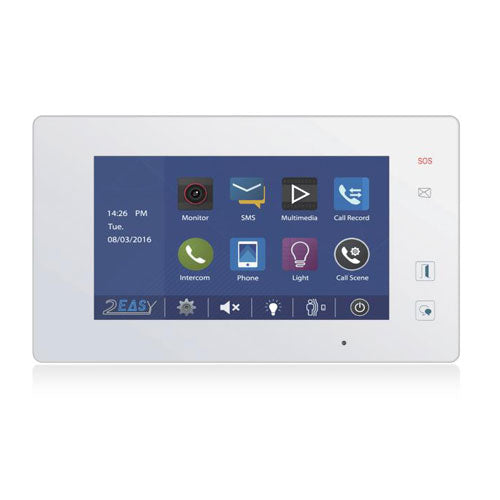Brands
Tech Talk: AQ’s William E. Low discussing the Bridges & Falls series
September 25, 2013 5 min read
The following questions were posed by Stereophile’s Associate Editor, Stephen Mejias, in conjunction with an Entry Level column written for Stereophile’s October 2013 issue, in which Stephen covered several models of Bridges & Falls cables. The transcript below is the complete virtual “conversation between the two, discussing the provenance of the B&F line, its relationship to cables past and present, and more.
1. SM: Why did AudioQuest decide to revise its line of interconnects?
WL: I guess it’s correct to call the our Bridges & Falls a major “revision,” as compared to the constant tweaking I do in general. I can never leave well enough alone if I’ve noticed a way to make even the slightest improvement in performance.
Previous to the new models, we had a series of much celebrated “Snake” interconnect cables. While internally and sonically these cables were far from normal, their form-factor was traditional. They were sold in pairs of separate left and right cables. Because these cables pretty much couldn’t be terminated with a mini-phone plug, the 3.5mm stereo plug so common today, there was also a separate series of AQ Mini cables which had both channels in a single cable, and could easily be terminated with single connectors like a 3.5mm, 30-pin iPod, or a DIN plug. While the RCA plug is still standard on larger pieces of equipment, 3.5mm Mini plugs have become the standard for auxiliary inputs on everything else, including car stereos and many headphones, and for the output on phones, tablets and so much more, making the 3.5mm plug almost iconic for audio today the way the RCA plug was in the past.
The not hidden, but unfortunately unnoticed secret, was that the Mini cables were also available as RCA-to-RCA cables, and offered better sound for the money than the Snake cables. I recognized that if I consolidated all the priorities (except for balanced XLR applications), I could design a series of cables which would sound better than any of the then current Snakes and Mini cables, which would be easy to terminate with RCA, 3.5mm (male of female), DIN and iPod connectors … and that the RCA to RCA versions wouldn’t be ignored once they were the main line. Better sound for less money, and less inventory for AQ and dealers, a perfect win-win.
2. SM: In general, how do the new interconnects differ (physically, technologically) from the old Alpha-Snake, G-Snake, Sidewinder, etc.?
WL: As I’ve mentioned, the most obvious difference is that both the L & R channels are contained within a single outer jacket, PVC or braided depending on the model. This not only enables using today’s necessary variety of single-cable stereo connectors, it also costs less to manufacture than 2 individual cables. I then used the available budget to upgrade the internal cable geometry of even the least expensive Tower cable from our very effective Symmetrical-Coax design to Double-Balanced, using separate positive and negative conductors inside a separate connected-on-one-end shield; something previously only available on the over $100 Snake models.
Maybe the most important example of the power of this redistributed budget is that Golden Gate, the price equivalent of the previous Sidewinder, could make the big upgrade to PSC (Perfect-Surface Copper). The combination of PSC and being Double-Balanced, gives $69 Golden Gate unequivocally higher performance than the previous $95 Copperhead.
We also took the opportunity to design new ground-up RCA and 3.5mm plugs using better metals and which can be Cold-Welded to the cable instead of soldered. Inside those pretty barrels are the most sophisticated plugs ever used in a normal price range … the most sophisticated 3.5mm plug ever made, period.
The advantages of this design approach extends all the way up through 8 models, culminating in the all-singing and all-dancing pure-solid PSS silver Angel model. As with the very high-performance Big Rivers (Columbia, Colorado, Niagara), the Falls cables (Victoria, Yosemite, Angel) use Air-Tubes and DBS (AQ’s patented Dielectric-Bias System). Along with the cost-efficient advantages I already mentioned, only needing a single DBS pack is another reason the Falls are able to sound so good for so little.
While it might be confusing to look at the Falls and AQ’s Big River cables and wonder which path to take, it’s actually very simple: If 3.5mm or DIN or iPod connectors are required, Falls cables offer previously unavailable super-high performance. If balanced XLR cables are needed, only the Big Rivers answer the call. And, if the requirement is RCA to RCA, then the 2 paths are really just a single straight path up. The cables in each series all have exactly the same price/performance ratio. Victoria brings DBS performance to an unprecedented lower price, Columbia uses the same materials with much bigger air-tubes to make better sound, for a higher cost. Yosemite’s FEP tubes allow Yosemite to sound clearly “faster” and more dynamic than Columbia, Colorado’s bigger FEP tubes … you get the idea.
3. SM: AQ offers an unusually large selection of affordable cables: The Evergreen, Golden Gate, Big Sur, and now the entry-level Tower all come in at under (sometimes significantly under) $100/1m. Why does AQ feel so many options are necessary? It wasn’t until very recently that AQ introduced the Tower model. Why was Tower necessary?
WL: I often say that AudioQuest doesn’t decide what type of cables are needed. It’s the hardware and device manufacturers who put holes on their equipment, making it AQ’s job to fill those holes, be they HDMI, USN, RJ45, or 3.5mm or RCA.
Similarly, people need to be able to maximize the performance of their equipment within their budget. It’s not AQ’s place to ever tell people how much to spend … It’s our job to make the best possible cable at whatever prices people need.
Looking down from the lofty heights of high-end, 3 models under $100 (Big Sur is $109) might look like a lot, but from the other side, $25 Tower is necessary to make that first rung on the ladder, the most important step, reasonable to as many people as possible. Again, from high above, the $10 jump to Evergreen might look trivial, but to a Tower user, paying, Evergreen costs 40% more … not trivial.
Then there’s the 97% jump to Golden Gate. Personally, I think that’s the biggest value jump in the line, but not to the listener who can’t afford it, or to the one who can cruise on by to the even clearer and cleaner sound of the models above. My briefcase carries a DragonFly DAC and a couple of Big Sur cables (3.5 to 3.5 and 3.5 to RCA) so that no matter what my hotel room offers, I can plug in good sounds and enjoy music wherever I am.
4. SM: How is the company able to provide such affordable products?
WL: All manufacturers can offer cables starting at $25, that’s not a challenge. What is unfortunately somewhat unusual is that we take our entry-level products 100% as seriously as any other product we make. While our effort and intentions are the same for every model, in some ways the “affordable” models are our most important, because they affect the listening pleasure of so many many more people … and we like to think might both establish AQ’s credibility and wet the appetite for maybe a higher-performance model later.
Subscribe
Sign up to get the latest on sales, new releases and more …

